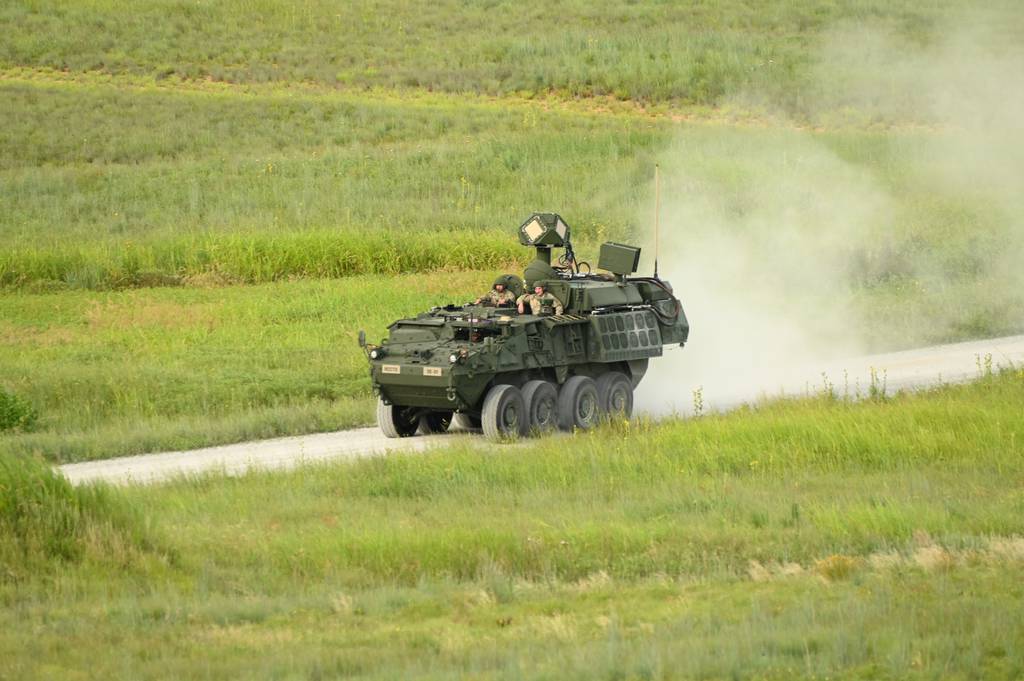
HUNTSVILLE, Ala. — The U.S. Army plans to choose a few teams from a larger pool to compete to develop its Enduring High Energy Laser, or HEL, system for short-range air defense in early 2025, Lt. Gen. Robert Rasch, the Rapid Capabilities and Critical Technologies Office director, said last week.
The Army will carry teams through design and development and plans to select a winner to build an enduring HEL for short-range air defense in the first quarter of fiscal 2026, according to a broad agency announcement for the effort posted to Sam.gov.
Related: US Army refreshes competition for short-range laser
The service held an industry day in July and has been collecting proposals with “a lot of interest from those industry partners we’ve seen and some that we hadn’t necessarily seen before,” Rasch told Defense News in an interview at the Space and Missile Defense Symposium here.
“Some of them are teaming up together. Some of them are on their own. But they see what other folks are doing and trying to get better,” Rasch added. “That is where innovation occurs and that’s where we maintain that leap ahead capability over our adversaries.”
The service has spent years developing lasers for various weapons systems and recently deployed four Directed Energy Maneuver-SHORAD Stryker Combat Vehicle-based prototypes to the U.S. Central Command area of operations to evaluate how well a 50-kilowatt laser could fulfill the mission of taking out short-range air threats.
The first prototypes consist of a 50-kilowatt laser from Raytheon. Kord Technologies, a KBR company, is the lead integrator.
RELATED
:quality(70)/cloudfront-us-east-1.images.arcpublishing.com/archetype/UONH356ARBDD7PJM5TOLBZ3CJ4.jpg)
Rasch said those prototypes, and other efforts like putting larger lasers on palletized weapon systems and smaller lasers on the Infantry Squad Vehicle and the Joint Light Tactical Vehicle, have taught the service what could potentially be the sweet spot for balancing laser power needs with other factors that play into taking out enemy air drones of various sizes.
Rasch’s office is currently evaluating 10-, 20-, 50- and 300-kilowatt options for a wide variety of threats and missions. The 300-kilowatt laser is designed for the Indirect Fire Protection Capability, which is a system that will use kinetic, laser and high-powered microwave weapons to destroy threats including rockets, artillery, mortars, drones and cruise missiles. The Army is to receive that laser weapon next year.
“That informed the Enduring High Energy Laser [broad agency announcement] that we put out,” Rasch said. “You’ll notice… that we didn’t reference kilowatts, right? It’s easy to talk about lasers in regards to kilowatts because it’s easy to get your head wrapped around more kilowatts, probably better, less kilowatts, probably not as effective or lethal, but that’s only one factor that comes into how effective the system is downrange.”
For example, Rasch noted, a 50-kilowatt system might have an ideal beam director “so it’s not making all the proper utilization of beam forming and getting that power down range. You might not be as effective as a 30-kilowatt, so there’s multiple components and multiple levers… that come into play.”
The extensive evaluations of high energy laser have revealed how different designs perform at various levels, from system-level to sub-component-level testing. Rasch pointed out that a 50-kilowatt system might not be as effective as a 30-kilowatt one if its beam director isn’t optimized for beam forming, highlighting the importance of multiple factors in making an effective high-energy laser system.
Through these evaluations, the Army has gained significant insights into how to create more effective high-energy laser systems. These lessons extend to understanding the requirements for sustaining these directed energy systems in challenging environments like the Middle East. Rasch emphasized the difficulty of transitioning from lab demonstrations to field deployment, especially in harsh conditions where maintenance and repairs are particularly challenging.
The Army has made significant progress in developing methods for sustaining and repairing these systems in environments with high dust levels. The goal is to create a system where soldiers can easily replace components in the field during combat.
Beyond the four prototypes currently in use, Rasch’s office is set to evaluate additional prototypes from Lockheed Martin and nLight, each offering unique design solutions, over the next several years, building on the original DE M-SHORAD prototyping efforts.
Jen Judson is an award-winning journalist covering land warfare for Defense News. She has also worked for Politico and Inside Defense. She holds a Master of Science degree in journalism from Boston University and a Bachelor of Arts degree from Kenyon College.
Author: Jen Judson
Source: DefenseNews



